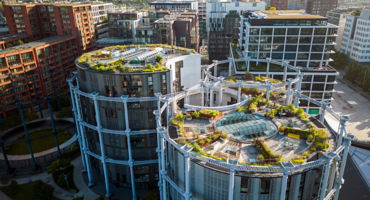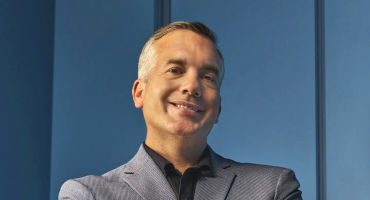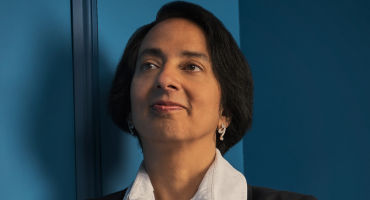Skip to main content
- Funds
- Insights
- Capabilities
- About Us
- My Account
The views expressed are those of the author at the time of writing. Other teams may hold different views and make different investment decisions. The value of your investment may become worth more or less than at the time of original investment. While any third-party data used is considered reliable, its accuracy is not guaranteed. For professional, institutional, or accredited investors only.
At my daughter’s recent thirteenth birthday party, I rode the Battlestar Galactica rollercoaster at Universal Studios in Singapore. It was a harrowing experience: a 12-metre drop at 90 km/h while being turned upside down five times. I thought it would never end. As a metaphor for emerging markets (EM) equity performance in recent years, it felt quite apt. However, with the headwinds that battered EM markets in 2022 starting to show signs of easing in recent weeks, I am increasingly optimistic about the potential opportunities within select EM equity themes.
While a number of challenges persist in emerging markets, improving news flow and valuations offer an increasingly favourable backdrop for considered thematic investing in the asset class. In particular:
Leading economic indicators are improving — The GDP growth differential between emerging and developed markets, which reached a 20-year low at the beginning of last year1, has now troughed and is steadily improving, and leading indicators of economic growth are currently accelerating at a faster pace in emerging markets. China’s reopening is a major part of this story, and the relaxing of China’s zero-COVID strategy and the introduction of targeted policy support measures should support this trend. The Indian growth picture is also improving.
Inflationary pressure is lower — Unlike their developed market (DM) peers, EM central banks did not treat rising inflation as "transitory”; hence their hiking cycle began more than 12 months sooner — with emerging markets, in aggregate, experiencing around half the level of headline inflation seen in DM economies. With positive real interest rates and moderate or falling inflation, we believe the outlook for monetary policy is significantly more supportive compared to the challenges faced by DM central banks.
Earnings revisions signal improving relative performance — EM earnings revisions began to underperform almost 18 months ago and while we are not yet close to seeing earnings upgrades in emerging markets, DM earnings downgrades have now accelerated on a relative basis. Historically, this has been a strong signal for EM equities’ relative performance.
Valuations are more attractive — After an aggressive derating in 2022, EM equity valuations look cheap both relative to their own history and relative to their DM counterparts. On a cyclically adjusted earnings basis, EM equities currently trade at roughly half the price-to-earnings ratio of developed markets2, though this aggregate valuation picture hides some large dispersions. Most notably, China is trading at close to its cheapest valuation in history and India at its most expensive.
Pressure from the US dollar is easing — The fortunes of the US dollar have long impacted sentiment on emerging markets, with a stronger US dollar often equating with weaker relative EM performance. After hitting a 20-year high in 2022, the trade-weighted dollar seems to be losing momentum3. The combination of slowing US inflation, signs of smaller incremental rate increases by the US Federal Reserve (Fed) and weaker growth expectations have all weighed on the dollar, easing pressure on emerging markets.
In many ways, 2022 felt like a transition year and the macro environment is now distinctly different to anything we’ve experienced since the global financial crisis. In this new environment, we are focusing our research on the following three areas of opportunity:
Social inclusion — After 30 years of declining returns to labour across economies, a fight back has begun. Rising inflation has been the immediate catalyst, but tension has been building for some time. Industrial action has accelerated globally, and government policy ultimately moves to reflect the will of the people. Transitioning towards a more inclusive economic model will take years. But I think it is inevitable that greater redistribution of wealth, more progressive income taxes, greater social spending, more investment in basic services and heavier regulation of specific industries will follow, providing tailwinds for enablers and beneficiaries of this transition.
Likely thematic beneficiaries: financial inclusion, health care provision and social empowerment
Net zero — Russia’s invasion of Ukraine turned net zero into a geopolitical theme, and while the costs of transitioning to a net-zero world have increased over the past 12 months (with higher inflation, interest rates and capex costs), so has the national security urgency to reduce dependence on fossil fuels. Some important policy developments took place in 2022. In particular, the establishment at COP27 of a “loss and damage” fund to provide financial assistance to nations most vulnerable and most impacted by climate change will help support a faster clean-energy transition.
Likely thematic beneficiaries: environmental consciousness and energy efficiency
Economic nationalism — The Fed’s Geopolitical Risk Index is at its highest level since the Iraq war in 20034 and the transition towards a multipolar world is continuing apace, with China playing a growing role. We expect a shift in post-Cold War structural drivers: deglobalisation instead of continued global integration; institutionalisation of great-power competition instead of geopolitical stability; and policy oriented towards broader national security instead of a sole focus on economic development. I believe we’re entering a new “capex super-cycle” focused on supply-chain diversification; food, water and energy security; and strategic industries like biotech, AI and defence.
Likely thematic beneficiaries: smart data, automation & robotics and digital infrastructure
In my view, by targeting structural trends, a thematic approach offers investors access to potentially compelling opportunities in EM equities. In today’s uncertain macro environment, this focus on themes as a starting point for portfolio construction rather than individual companies or sectors, which are more correlated with the vagaries of the economic cycle, would seem to hold even more appeal.
In two articles in our series on the secular trends spurring innovation and disruption across the global economy, my colleagues and I take a deeper look at the global thematic investment opportunities relating to financial inclusion and the global food system. And in two recent papers, Multi-Asset Strategist Adam Berger and colleagues examine how to incorporate thematic investing into a broader portfolio and offer a framework for structuring EM equity portfolios.
1,2,3,4Source: FactSet as of 31 December 2022
Featured Unique Perspectives

Impact measurement and management practices
What constitutes an impact investment? How is impact measured? And, what are the benefits of impact investing? Our Impact Management and Measurement Practice Leader Oyin Oduya discusses our approach.

Asia Tech: Building the technology for everything, everywhere, all at once
Yash Patodia articulates the investment opportunities within generative AI and mixed reality - two themes that are supercharging the tech industry. He outlines how Asia is the bedrock of the innovation and where he believes the world’s future growth will be.
URL References
Related Insights
Stay up to date with the latest market insights and our point of view.
Related Insights

Impact measurement and management practices
What constitutes an impact investment? How is impact measured? And, what are the benefits of impact investing? Our Impact Management and Measurement Practice Leader Oyin Oduya discusses our approach.

Asia Tech: Building the technology for everything, everywhere, all at once
Yash Patodia articulates the investment opportunities within generative AI and mixed reality - two themes that are supercharging the tech industry. He outlines how Asia is the bedrock of the innovation and where he believes the world’s future growth will be.

Will emerging Asia leapfrog the energy transition?
Decarbonizing while maintaining economic growth presents tremendous challenges for developing countries in Asia. Is technological innovation the solution?

Private biotech market: Innovation, valuations, and capital efficiency
Co-heads of biotech private investments I-hung Shih and Nilesh Kumar join host Thomas Mucha to explore today's private biotech market, highlighting the state of deal flow, valuations, and innovation.

The value in valuing employees
Companies able to adapt and respond to challenges in the labor market will find themselves well positioned for the future, say Equity Portfolio Managers Yolanda Courtines and Mark Mandel.

Navigating the opportunities and challenges of the energy transition
Two of our climate- and energy-focused investment professionals discuss what the low-carbon transition may look like and how investors can think about the challenges and opportunities it represents.

The allocator’s perspective: three key decisions on EM equities
How can investors best access opportunities within an improving outlook for emerging market equities? Natasha Brook-Walters, co-head of iStrat, shares three key decision points for allocators.

ESG integration in public and private markets
Two ESG leaders discuss why ESG matters for investors, and how their teams help inform the investment process. They also share their priority research and engagement topics for 2023.

China internet: Identifying opportunities amid economic reopening
China’s re-opening and economic recovery from its zero-COVID policy has bolstered our optimism in Chinese internet companies.

How to find potential in volatile European high-yield markets?
Fixed Income Portfolio Manager Konstantin Leidman discusses why European high-yield investors need to be ready for both further volatility and the emergence of new opportunities.

URL References
Related Insights